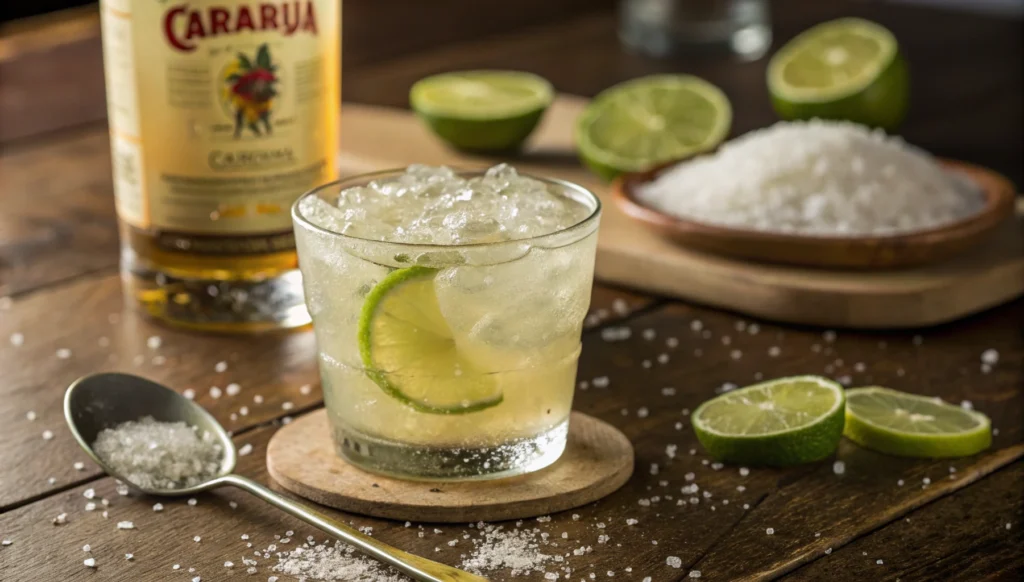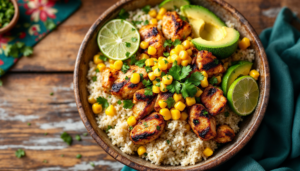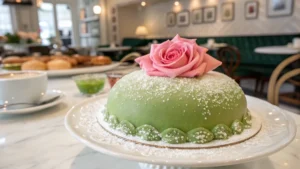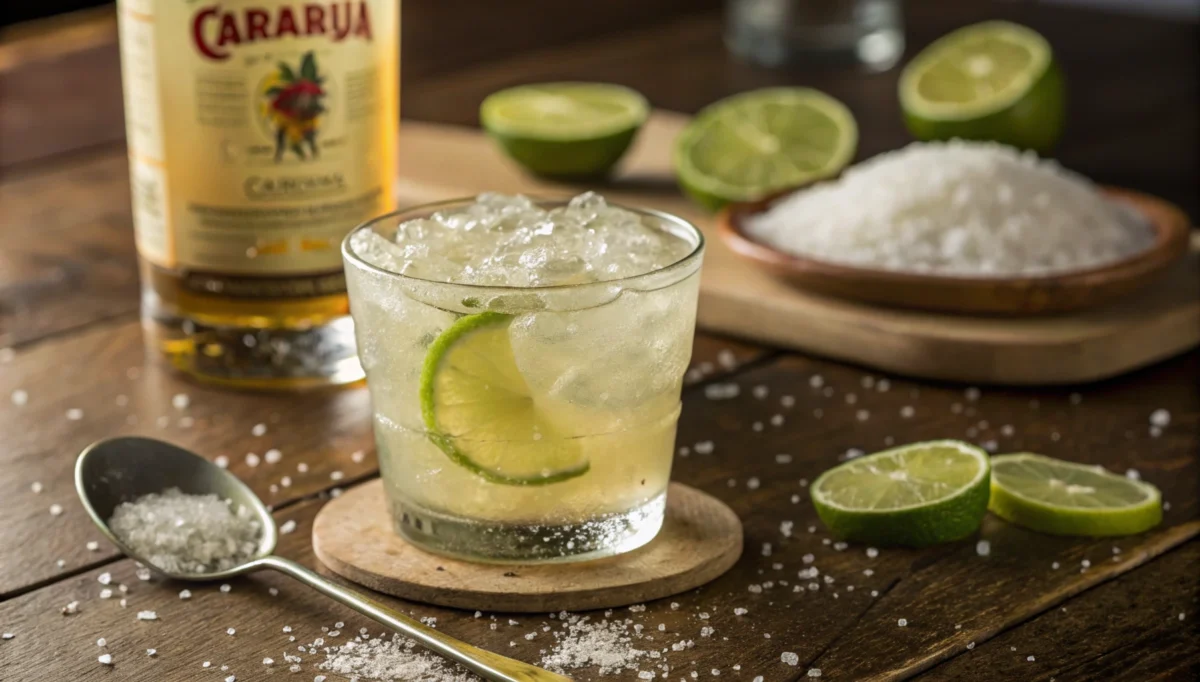
Introduction to the Caipirinha
The Caipirinha isn’t just a cocktail—it’s a celebration of Brazil’s rich heritage and tropical flavors. In this guide, we’ll dive deep into what makes this drink so special. From its humble origins to mastering the perfect balance of lime, sugar, and cachaça, you’ll learn everything you need to craft an authentic caipirinha recipe at home. Plus, we’ll explore exciting variations, expert tips, and its influence on global cocktail culture. Let’s raise our glasses to the art of making Brazil’s national cocktail!
Origin and History of the Caipirinha
The caipirinha traces its roots to the early 20th century in São Paulo, Brazil. Originally, it was a remedy for the flu, made with lime, garlic, and honey mixed with cachaça—a sugarcane spirit that’s as Brazilian as samba. Over time, the recipe evolved into the refreshing cocktail we know and love today, swapping out the garlic and honey for sugar and ice.
This cocktail’s name comes from the Portuguese word caipira, which refers to people from the countryside. It’s a nod to the drink’s rustic origins and simple ingredients. Now, the caipirinha is a staple at parties, beach bars, and festivals, symbolizing Brazil’s vibrant culture and zest for life.
Significance in Brazilian Culture
The caipirinha isn’t just a drink—it’s an experience. It’s the quintessential companion for social gatherings, often paired with traditional dishes like feijoada and churrasco. Whether you’re enjoying it at a lively Carnival celebration or a quiet evening by the beach, this cocktail brings people together.
Today, the caipirinha is a source of national pride and has gained international fame, earning a spot on menus around the world. But no matter where you sip it, the authentic taste of Brazil shines through every glass.
Essential Ingredients for an Authentic Caipirinha
Cachaça: The Heart of the Caipirinha
At the core of every authentic caipirinha recipe is cachaça, Brazil’s signature sugarcane spirit. Often mistaken for rum, cachaça is distinct because it’s made from fresh sugarcane juice rather than molasses. This difference gives it a uniquely earthy, grassy flavor that sets it apart.
When selecting cachaça, go for a high-quality brand—artisanal varieties often offer smoother, more refined notes. If you’re new to it, opt for a white (unaged) cachaça, which is commonly used in caipirinhas for its clean, crisp taste.
Selecting the Perfect Lime
The lime is another star ingredient that defines the caipirinha. Brazilian limes are small and intensely flavorful, but any fresh, juicy lime will do the trick. Choose limes with a vibrant green color and a smooth skin—they’re usually the juiciest. Avoid limes that feel too hard or have blemishes, as they might be dry inside.
Choosing the Right Sugar
Traditionally, white granulated sugar is used to sweeten the cocktail. Its fine texture dissolves easily when muddled with lime, creating a harmonious balance of sweetness and acidity. Some bartenders prefer raw or brown sugar for a richer, more caramel-like flavor, but this can subtly alter the drink’s classic taste.
The Role of Ice in the Cocktail
Ice isn’t just for chilling; it’s an essential ingredient that dilutes the strong flavors, balancing the drink perfectly. Use cracked or cubed ice rather than crushed, as it melts more slowly, keeping your caipirinha cool without watering it down too quickly.
If you’re interested in more traditional drinks from around the world, check out our Hugo Spritz Recipe for another refreshing cocktail with a European twist.
Step-by-Step Caipirinha Recipe
Preparing the Lime
The lime is the first step in creating the perfect caipirinha recipe. Begin by selecting a fresh, juicy lime. Wash it thoroughly to remove any wax or dirt. Cut the lime into quarters or eighths, depending on its size, ensuring each piece has a balance of juicy pulp and aromatic peel. This peel contains essential oils that contribute to the cocktail’s unique zest.
Muddling Techniques for Maximum Flavor
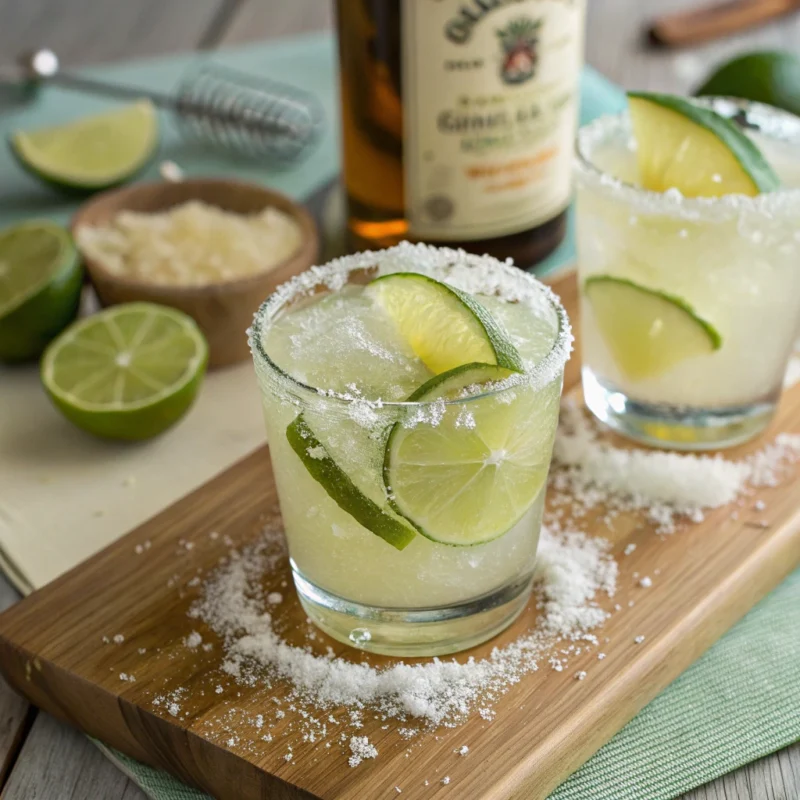
Muddling is a crucial step that releases the lime’s juices and oils. Place the lime wedges into a sturdy glass, pulp-side up, and add two teaspoons of sugar. Using a muddler, press down gently on the lime and twist. Avoid over-muddling, as this can release bitter flavors from the lime’s pith. The goal is to create a fragrant, syrupy base that combines the lime’s tartness with the sugar’s sweetness.
Measuring and Adding Cachaça
Once your lime and sugar mixture is ready, it’s time to introduce the star of the show: cachaça. Pour 2 ounces (about 60 ml) of cachaça over the muddled lime and sugar mixture. This step marries the citrusy base with the spirit’s bold, earthy character, creating a perfect balance.
Mixing and Serving the Caipirinha
Add a generous handful of ice cubes to the glass. Stir the mixture thoroughly to chill the drink and ensure the ingredients blend harmoniously. For an authentic touch, use a short, wide glass, like an old-fashioned or rocks glass. Garnish your cocktail with a thin lime slice or wedge on the rim.
Voilà! You’ve mastered the classic caipirinha. Its refreshing taste, combining tart lime, sweet sugar, and bold cachaça, is sure to transport you straight to Brazil.
Popular Variations of the Caipirinha
Caipiroska: The Vodka Twist
For those who prefer vodka over cachaça, the Caipiroska is a delightful alternative. This variation maintains the classic combination of lime and sugar but substitutes cachaça with vodka, resulting in a smoother, more neutral flavor profile. To prepare a Caipiroska, follow the traditional caipirinha recipe, simply replacing the spirit. This cocktail has gained popularity in countries like Brazil, Paraguay, Uruguay, and Argentina.
Caipiríssima: Rum-Based Alternative
Another intriguing twist is the Caipiríssima, which swaps cachaça for rum. This version offers a sweeter, more aromatic experience, especially when using a high-quality white rum. The Caipiríssima is similar to the Daiquiri but distinguishes itself by using muddled lime pieces instead of lime juice and omitting mint or soda water.
Fruit-Infused Caipirinhas: Exploring Flavors
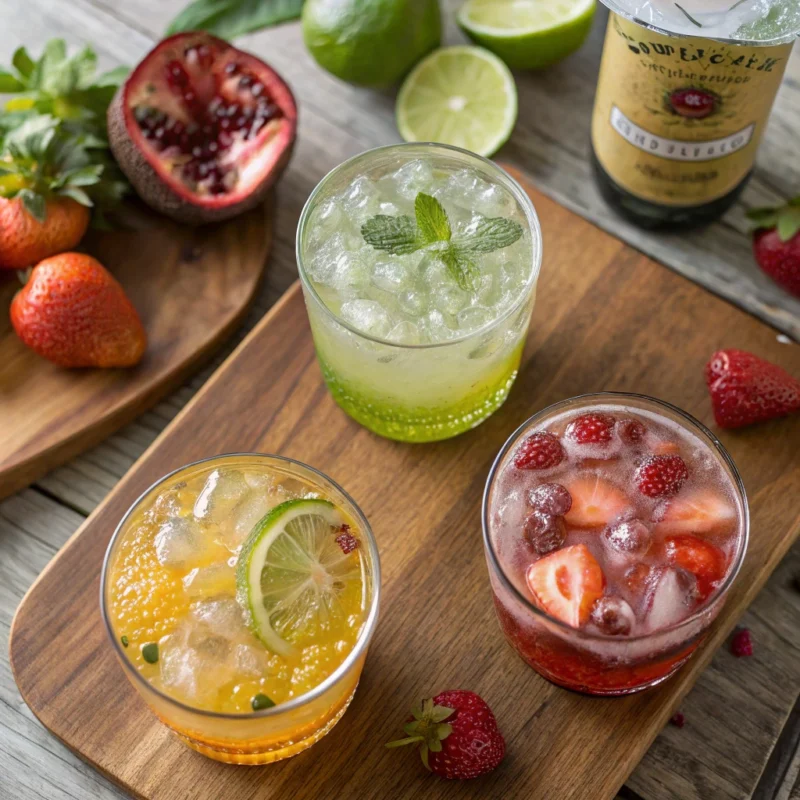
Elevate your caipirinha by incorporating various fruits, creating a Caipifruta. Popular choices include strawberries, passion fruit, kiwifruit, and pineapple. To craft a fruit-infused caipirinha, add fresh fruit pieces to the lime and sugar mixture, muddle gently, then proceed with the standard recipe. This approach introduces vibrant colors and flavors, making your cocktail both visually appealing and delicious.
Caipifruta: A Tropical Delight
The Caipifruta is a beloved Brazilian variation that combines cachaça with crushed fresh fruits and ice. Fruits like tangerine, mango, and cashew fruit are commonly used. This tropical twist adds a refreshing sweetness and complexity to the traditional caipirinha, perfect for warm weather enjoyment.
These variations showcase the versatility of the caipirinha, allowing you to tailor the cocktail to your personal taste preferences. Whether you stick to the classic caipirinha recipe or experiment with these alternatives, you’re sure to enjoy a delightful and refreshing beverage.
Tips for Crafting the Perfect Caipirinha
Balancing Sweetness and Acidity
The caipirinha recipe relies on a delicate balance between sweet and tart flavors. The sugar should complement the lime’s acidity without overpowering it. Start with two teaspoons of sugar, but don’t be afraid to adjust to suit your taste. If you’re using a particularly sour lime, a touch more sugar can make all the difference.
Selecting Quality Cachaça
Not all cachaças are created equal, and choosing a high-quality one is essential for a standout caipirinha. Artisanal cachaças are often smoother and richer in flavor compared to mass-produced varieties. If you prefer a milder taste, go for an unaged cachaça. For those seeking more complexity, try an aged variety with subtle woody and vanilla notes.
Glassware and Presentation
Presentation matters! Serve your caipirinha in a short, sturdy glass, like an old-fashioned glass. This type of glass not only looks authentic but also enhances the drinking experience. Add a lime wheel or wedge as a garnish for a touch of visual appeal.
Common Mistakes to Avoid
Avoid these pitfalls to ensure your caipirinha is always a hit:
- Over-muddling the lime: This releases bitter oils from the pith, disrupting the drink’s balance.
- Using pre-squeezed lime juice: Freshly muddled lime pieces are essential for the authentic flavor.
- Neglecting the ice: The right amount of ice keeps the drink cool and perfectly diluted.
Mastering these tips ensures your caipirinha is always refreshing and perfectly balanced, whether you’re enjoying it at home or impressing guests at a party.
The Caipirinha in Global Cocktail Culture
International Popularity and Adaptations
The caipirinha recipe has transcended its Brazilian roots, becoming a global cocktail icon. With its simple yet bold flavors, it appeals to a wide range of palates. Bartenders around the world have embraced the drink, often introducing unique twists to cater to local tastes. In the United States and Europe, variations featuring fruits like berries, passion fruit, and mango are common, while in Asia, exotic ingredients like yuzu and lemongrass add a regional flair.
Thanks to its refreshing and versatile nature, the caipirinha is a staple on cocktail menus everywhere. Its accessibility—relying on just lime, sugar, cachaça, and ice—makes it easy for both seasoned mixologists and casual enthusiasts to prepare.
Caipirinha in Bars and Restaurants Worldwide
Many bars and restaurants celebrate the caipirinha as a signature offering, especially in venues that highlight Latin American or tropical themes. It’s often paired with dishes that echo its vibrant and zesty profile, such as seafood ceviche, grilled meats, or spicy appetizers.
In global cocktail competitions, the caipirinha frequently serves as a base for creative interpretations, further cementing its status as a beloved classic. Despite these adaptations, the heart of the drink—its bright lime and earthy cachaça essence—always shines through.
Frequently Asked Questions About the Caipirinha Recipe
What Is a Substitute for Cachaça?
If cachaça isn’t available, white rum is the best substitute for crafting a caipirinha recipe. While it lacks the grassy, earthy notes unique to cachaça, white rum offers a clean, light flavor that works well in the cocktail. For a slightly different twist, vodka can also be used, resulting in a variation called the Caipiroska.
What Is the Difference Between Mojito and Caipirinha?
Though both are refreshing and lime-forward cocktails, the mojito and caipirinha differ significantly in ingredients and preparation. The mojito combines white rum, lime juice, sugar, mint leaves, soda water, and ice, creating a lighter, herbal drink. On the other hand, the caipirinha relies solely on muddled lime, sugar, cachaça, and ice, offering a bolder, more citrusy profile without the added fizz or minty touch.
What Is the Best Cachaça for Caipirinha?
For an authentic caipirinha recipe, opt for a high-quality white (unaged) cachaça. Brands like Leblon, Yaguara, and Novo Fogo are widely recognized for their smooth and clean flavors, ideal for mixing cocktails. If you prefer a richer, more complex taste, try using an aged cachaça with hints of vanilla and oak.
What Kind of Sugar for Caipirinha?
Traditionally, white granulated sugar is used in a caipirinha for its ability to dissolve quickly when muddled with lime. For a subtle twist, you can experiment with raw or brown sugar, which adds a touch of caramel-like sweetness, although it might slightly alter the cocktail’s classic taste.
If you have more questions or want to explore other recipes, be sure to check out our website for inspiration!
Conclusion
The caipirinha recipe is more than just a drink—it’s a taste of Brazil’s vibrant culture and zest for life. With its simple ingredients and bold flavors, the caipirinha is a cocktail anyone can master and enjoy. Whether you stick to the classic recipe or experiment with exciting variations like the Caipiroska or fruit-infused options, this drink is perfect for any occasion.
So, grab some fresh limes, high-quality cachaça, and sugar, and start crafting your perfect caipirinha. Cheers to discovering the essence of Brazil in every refreshing sip!
